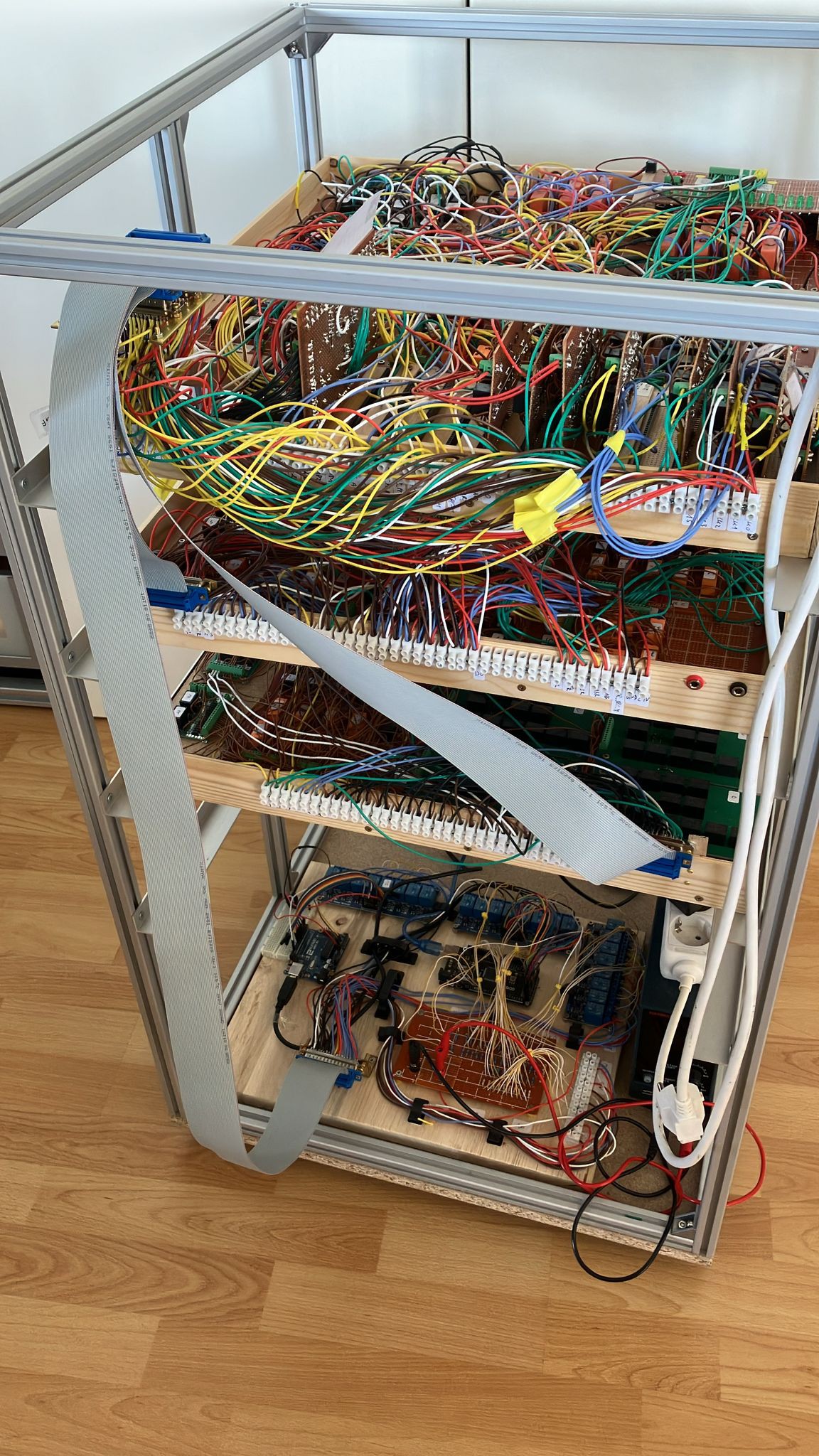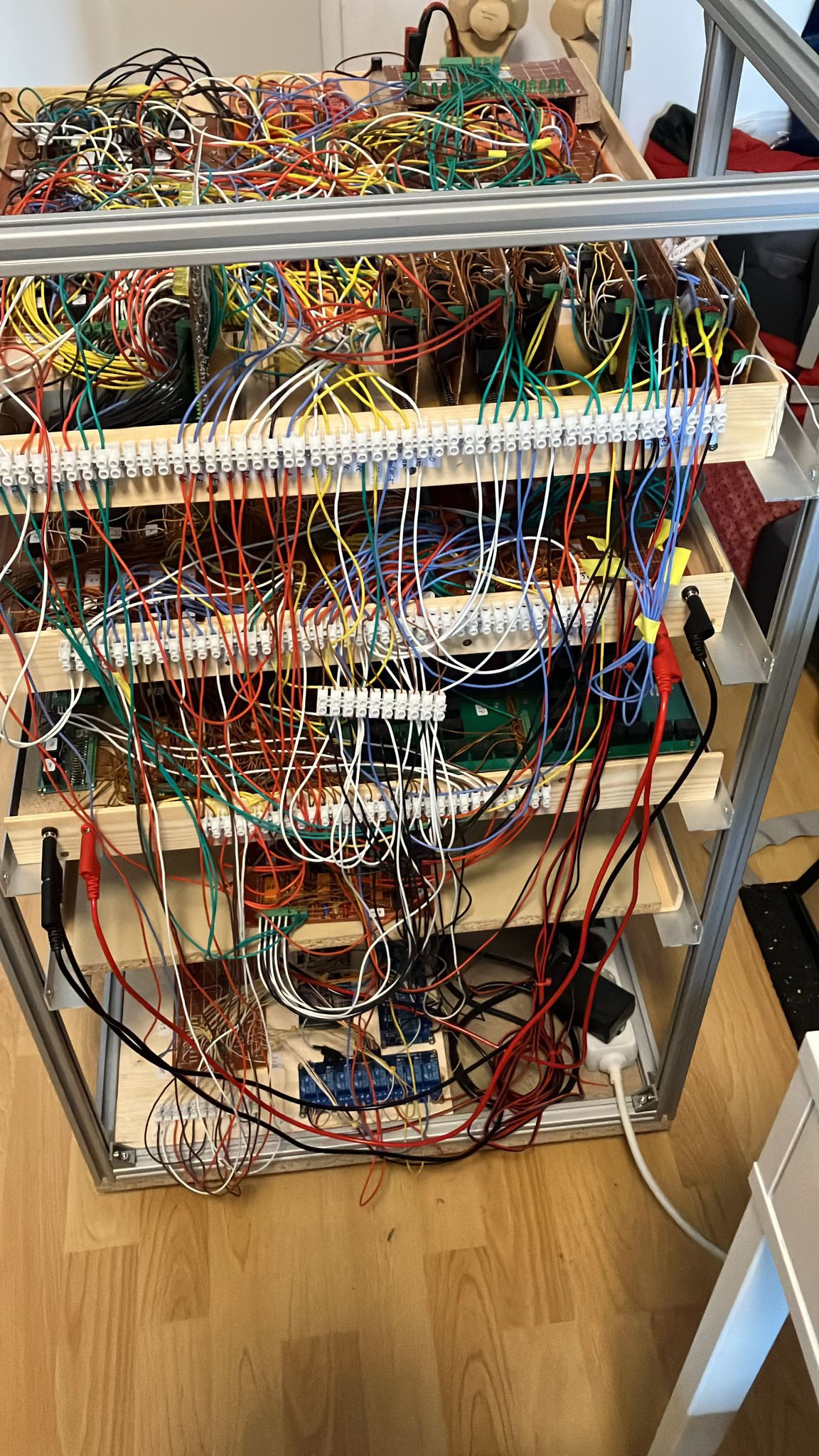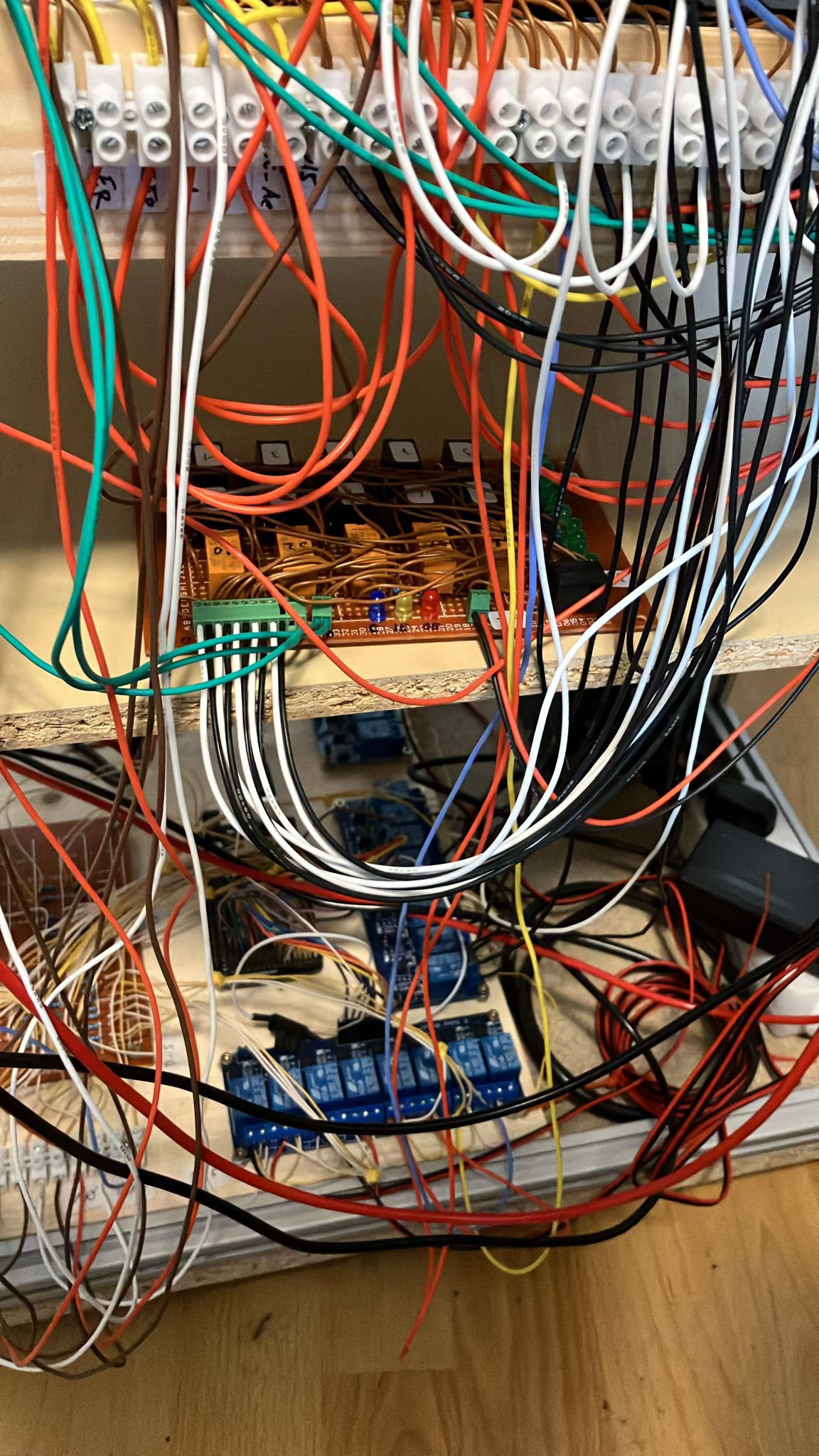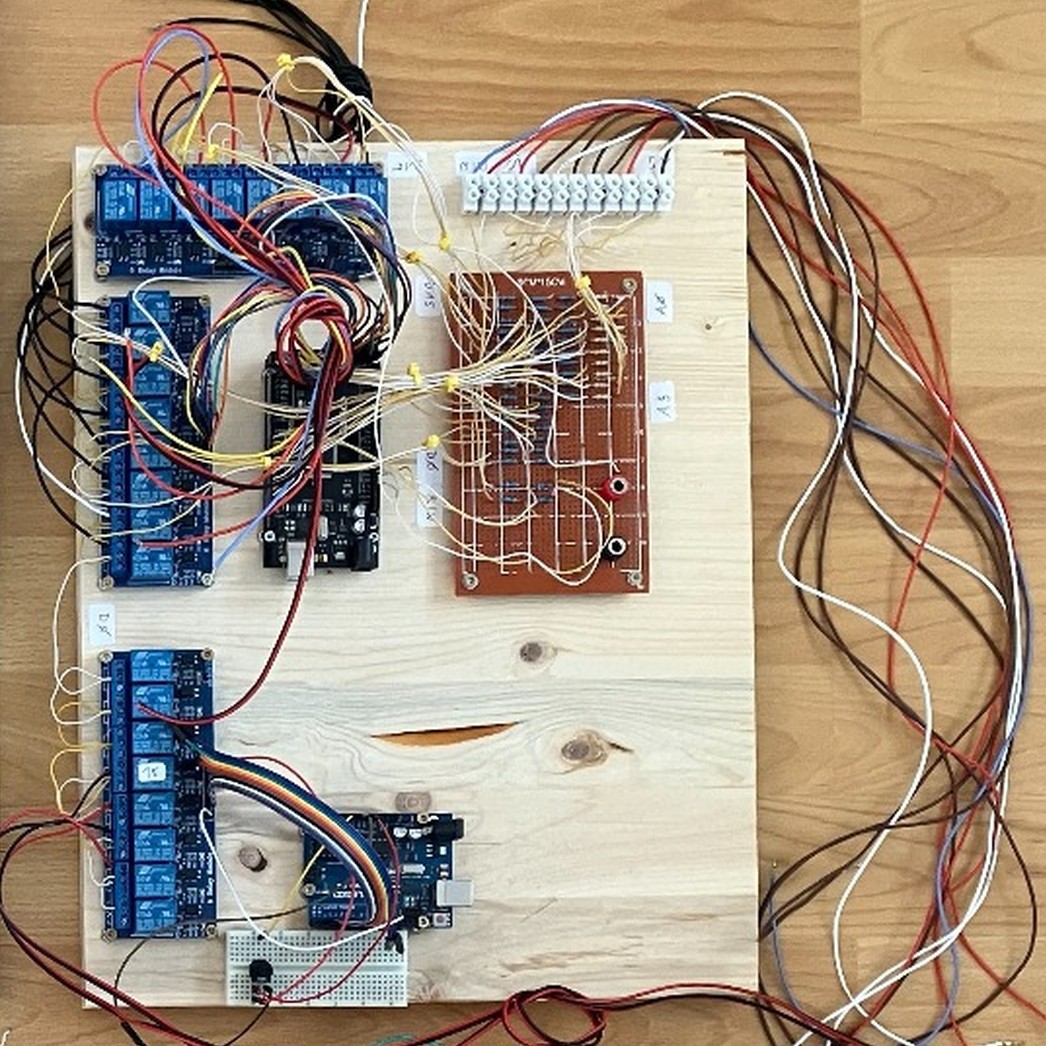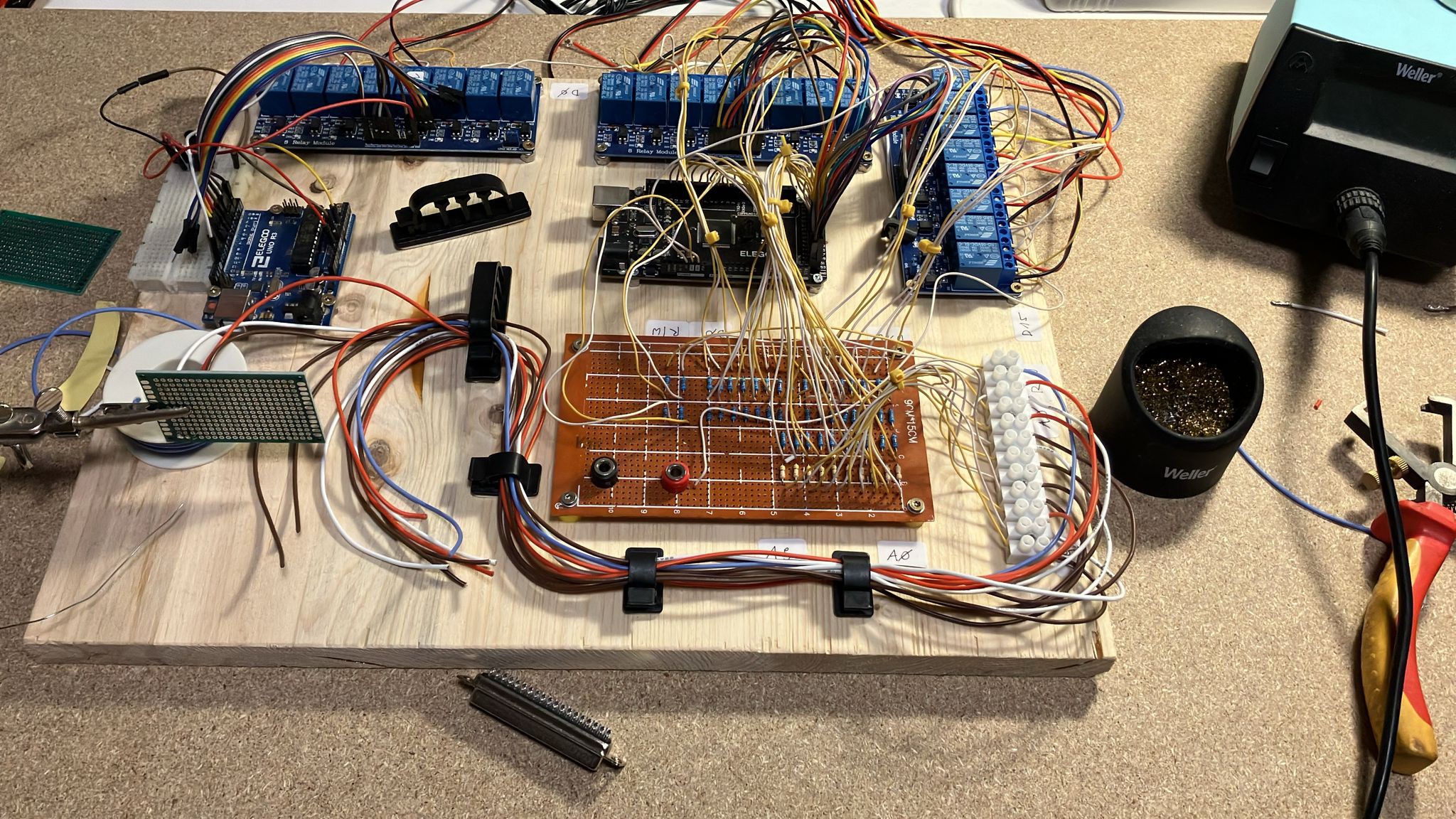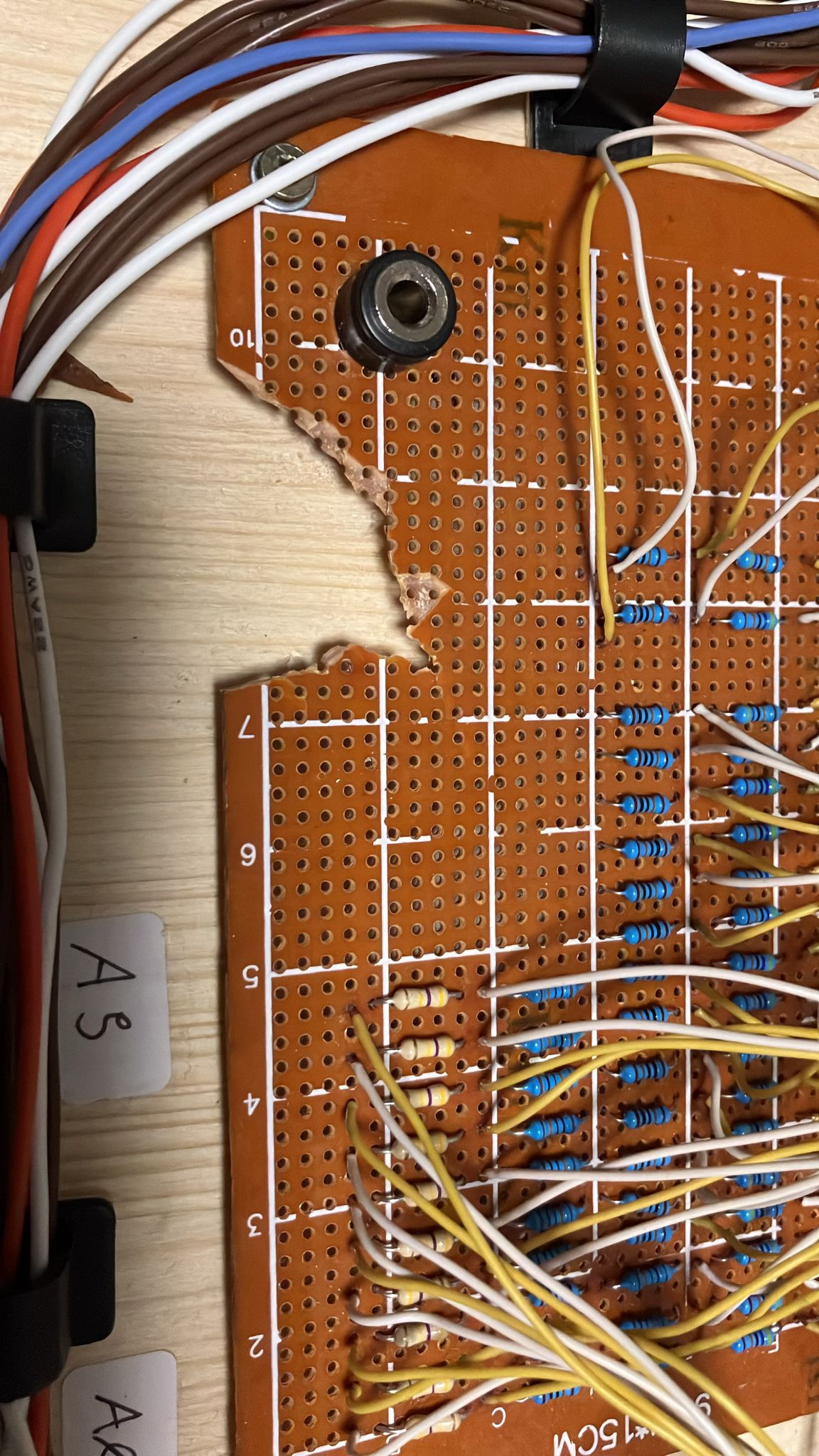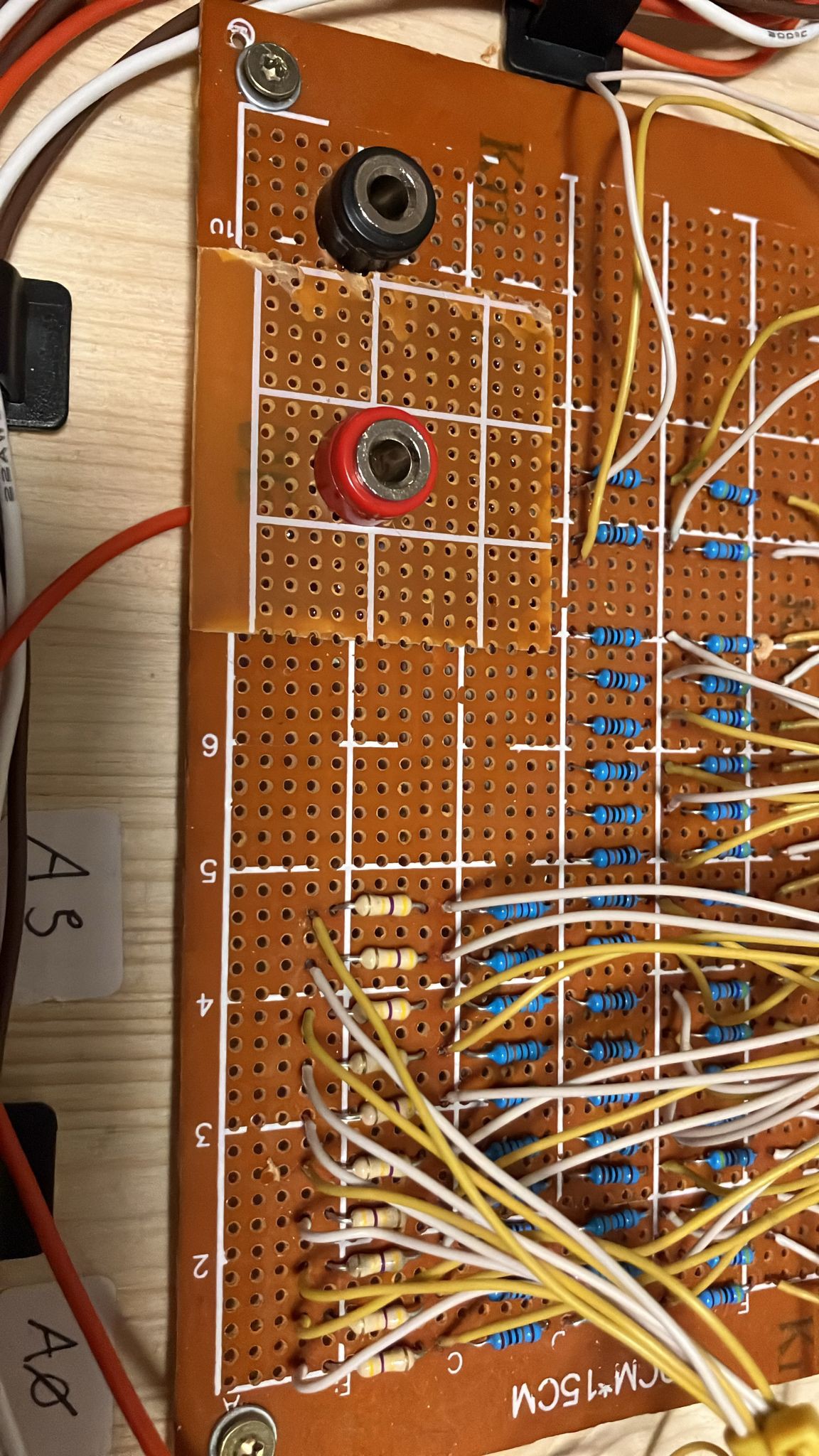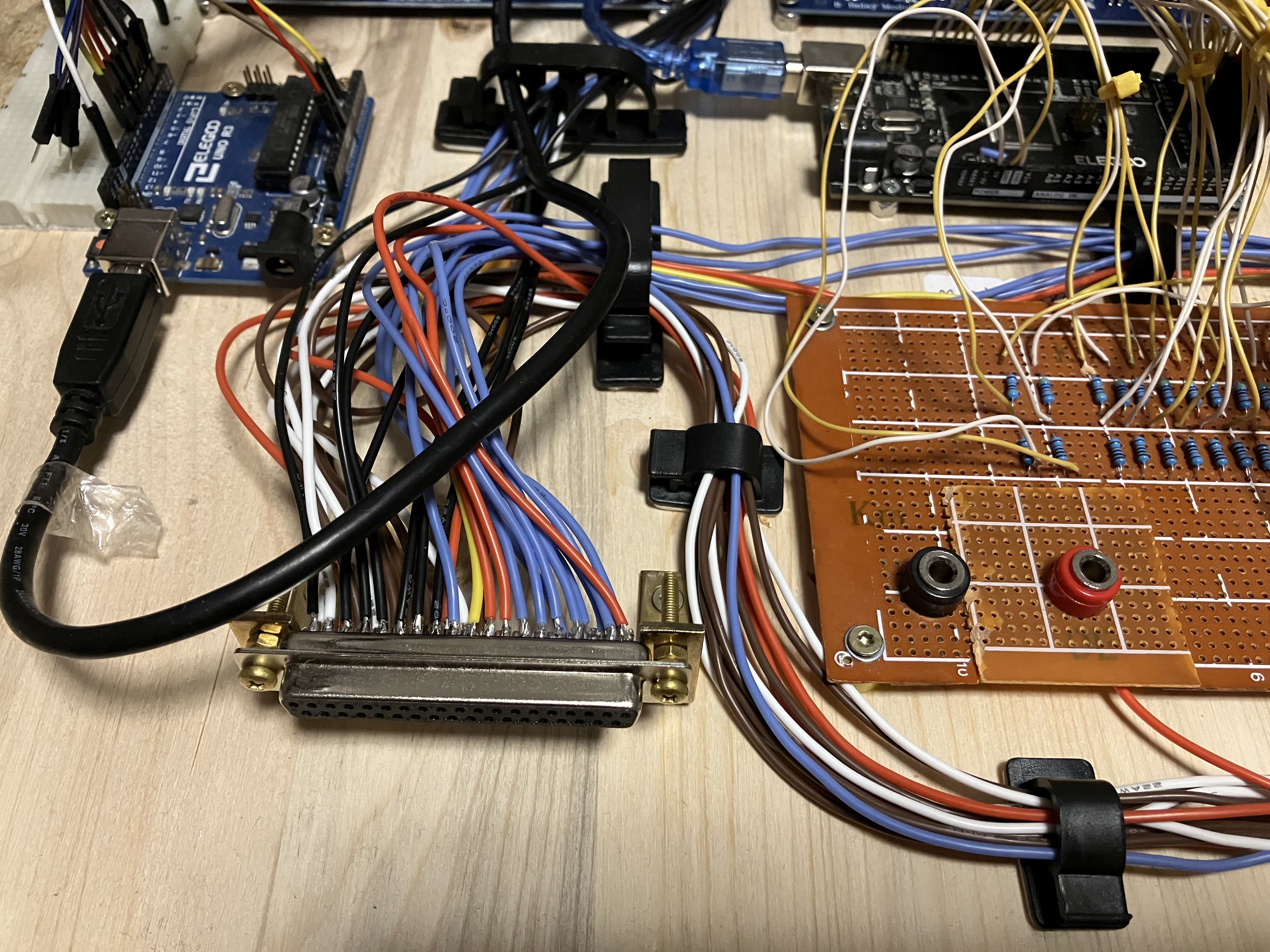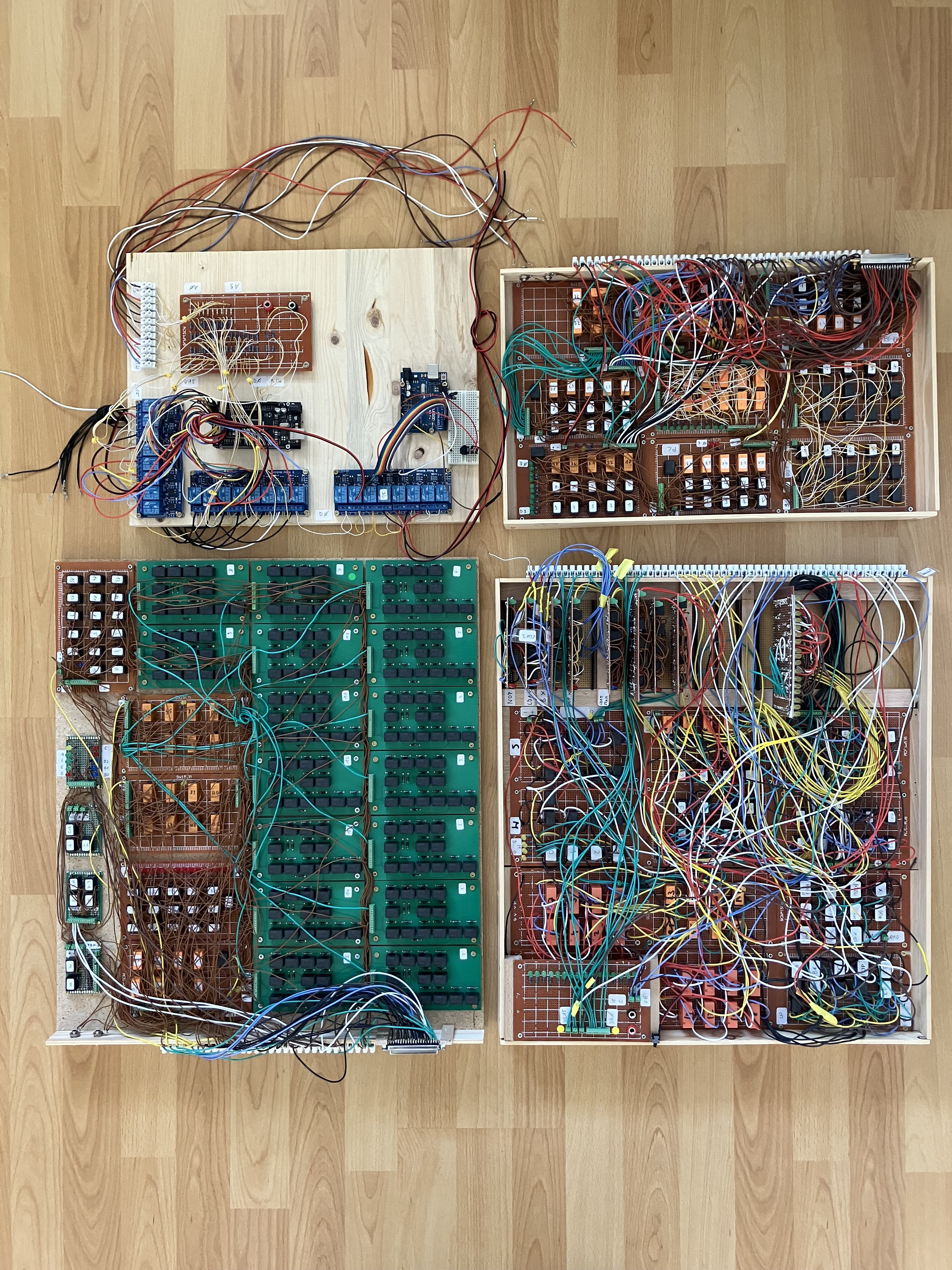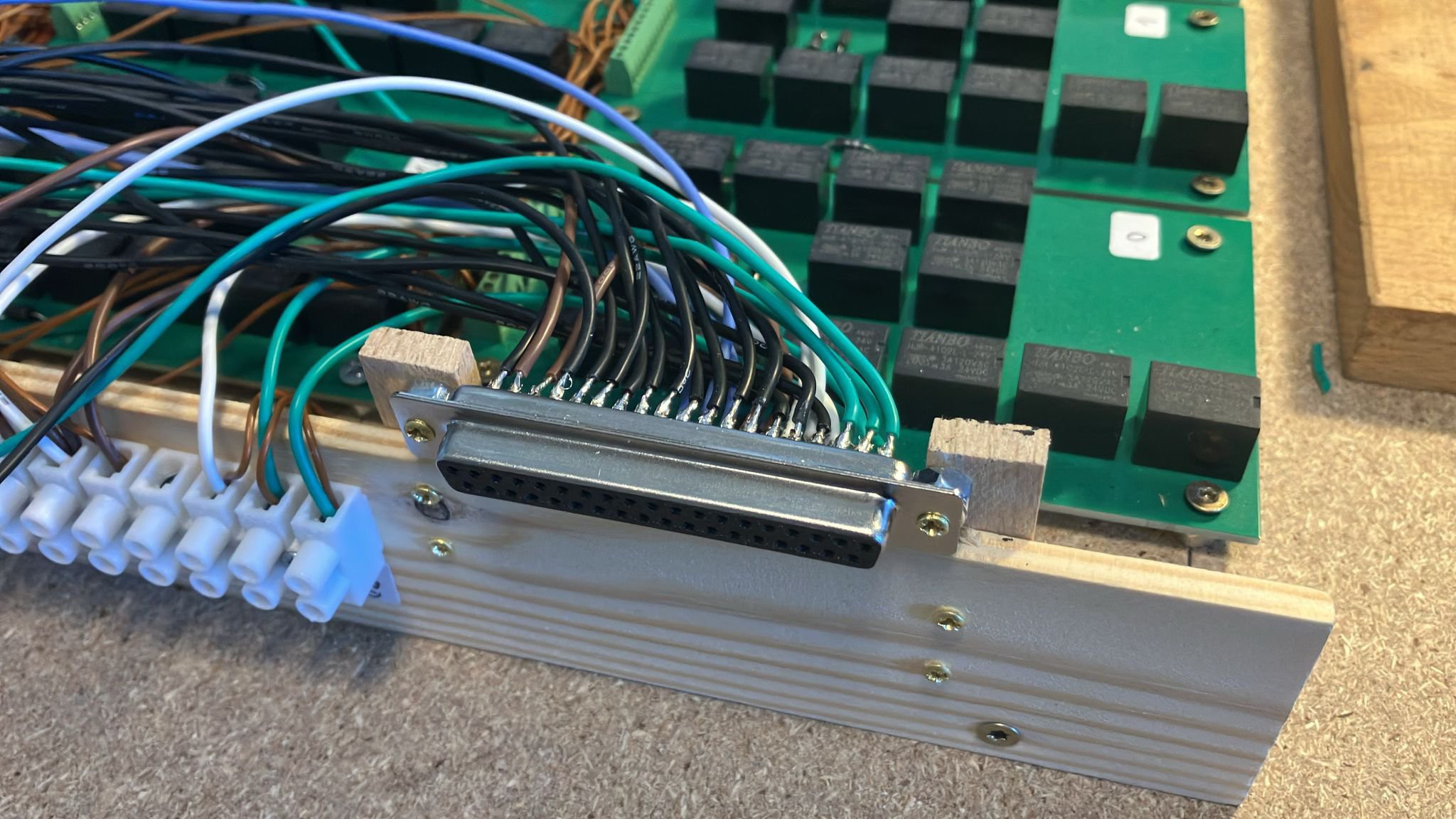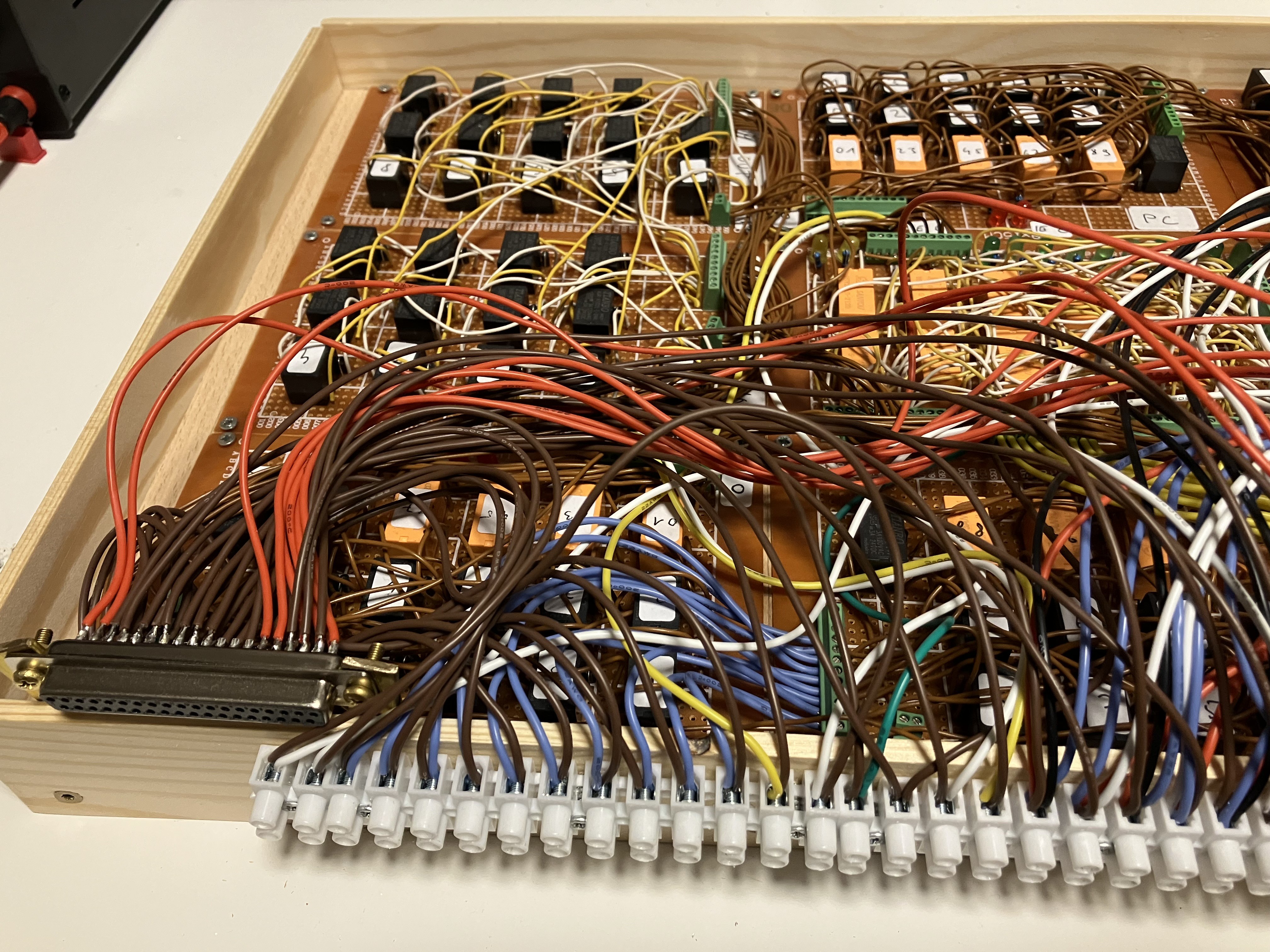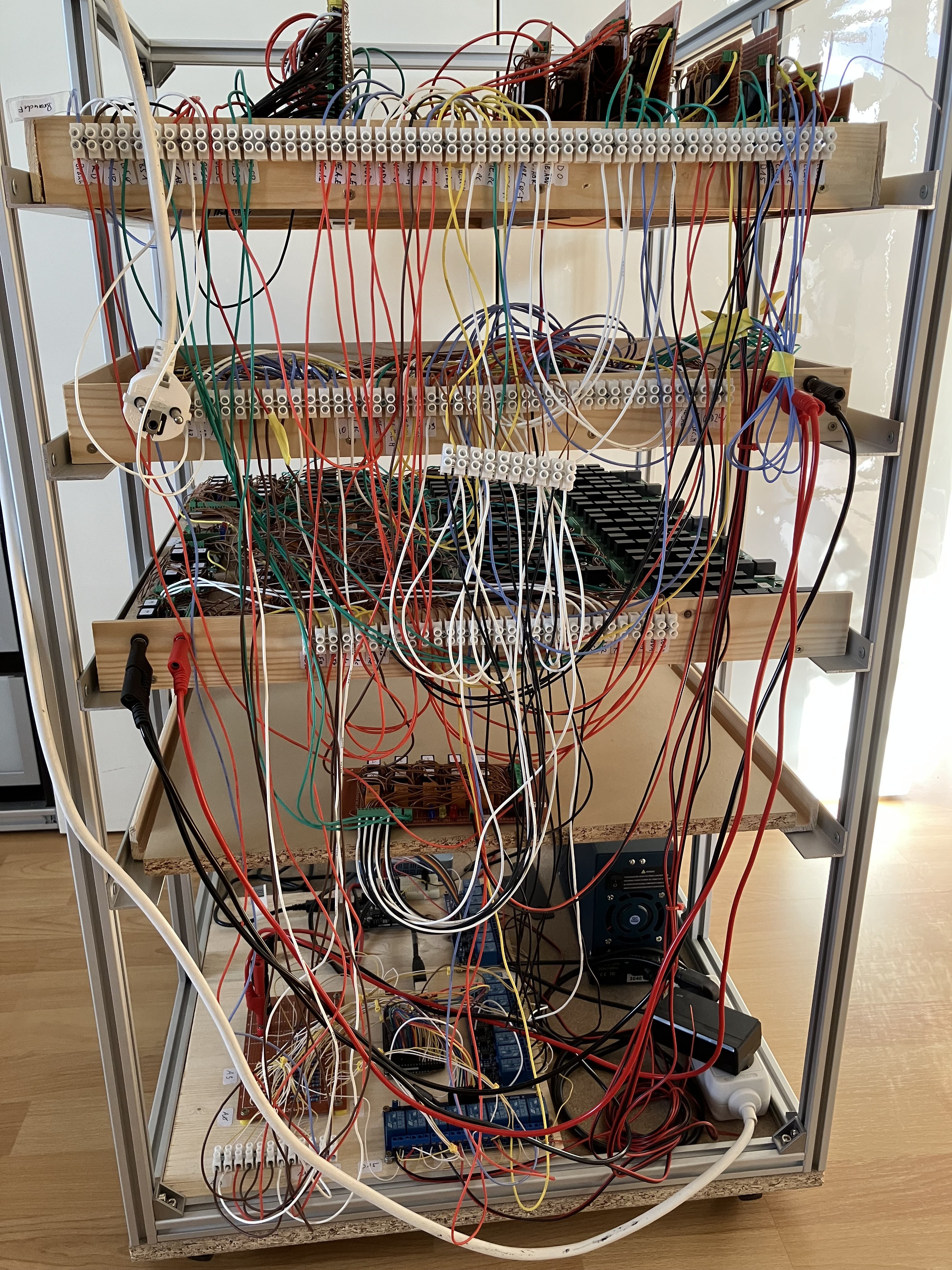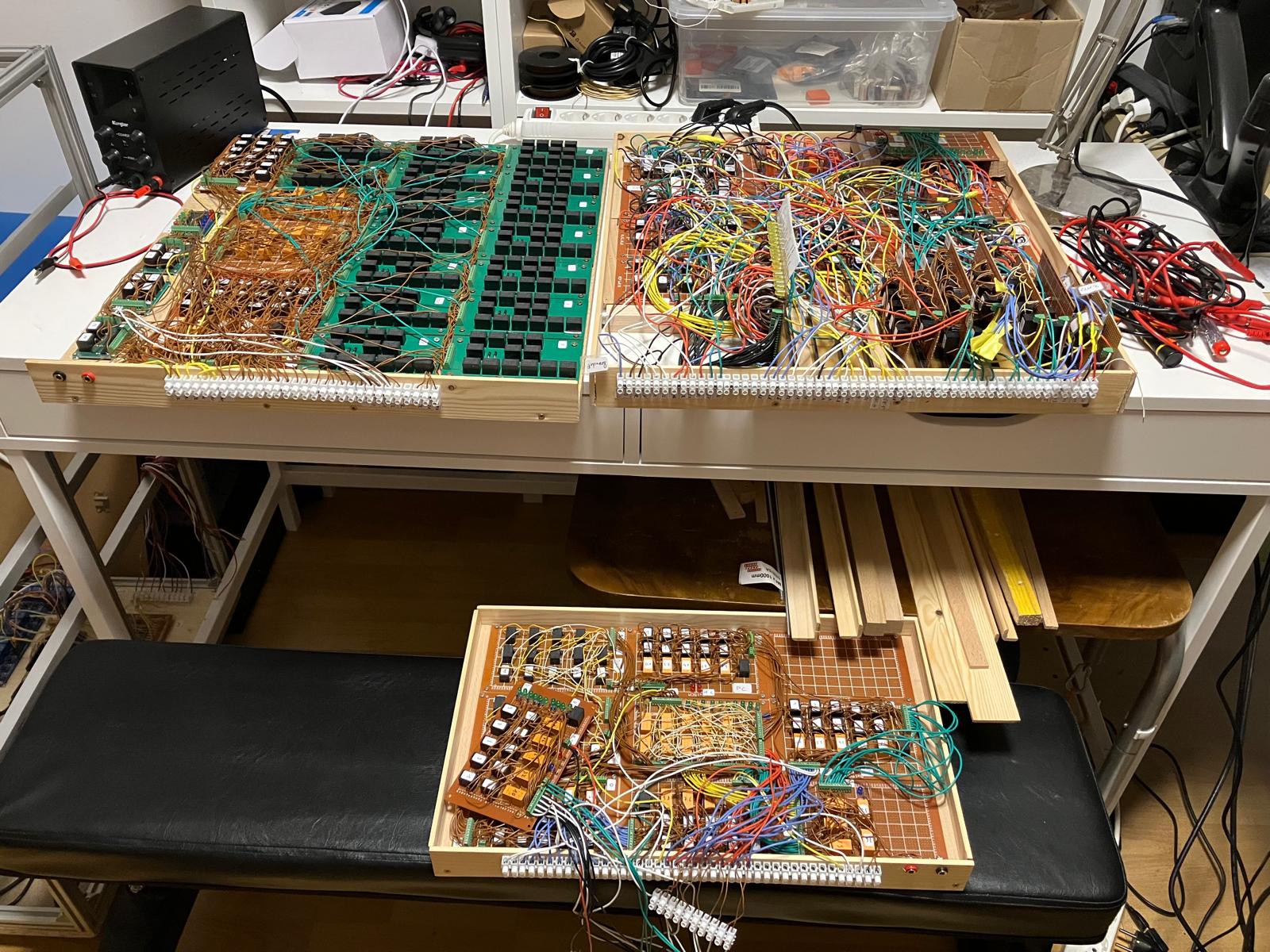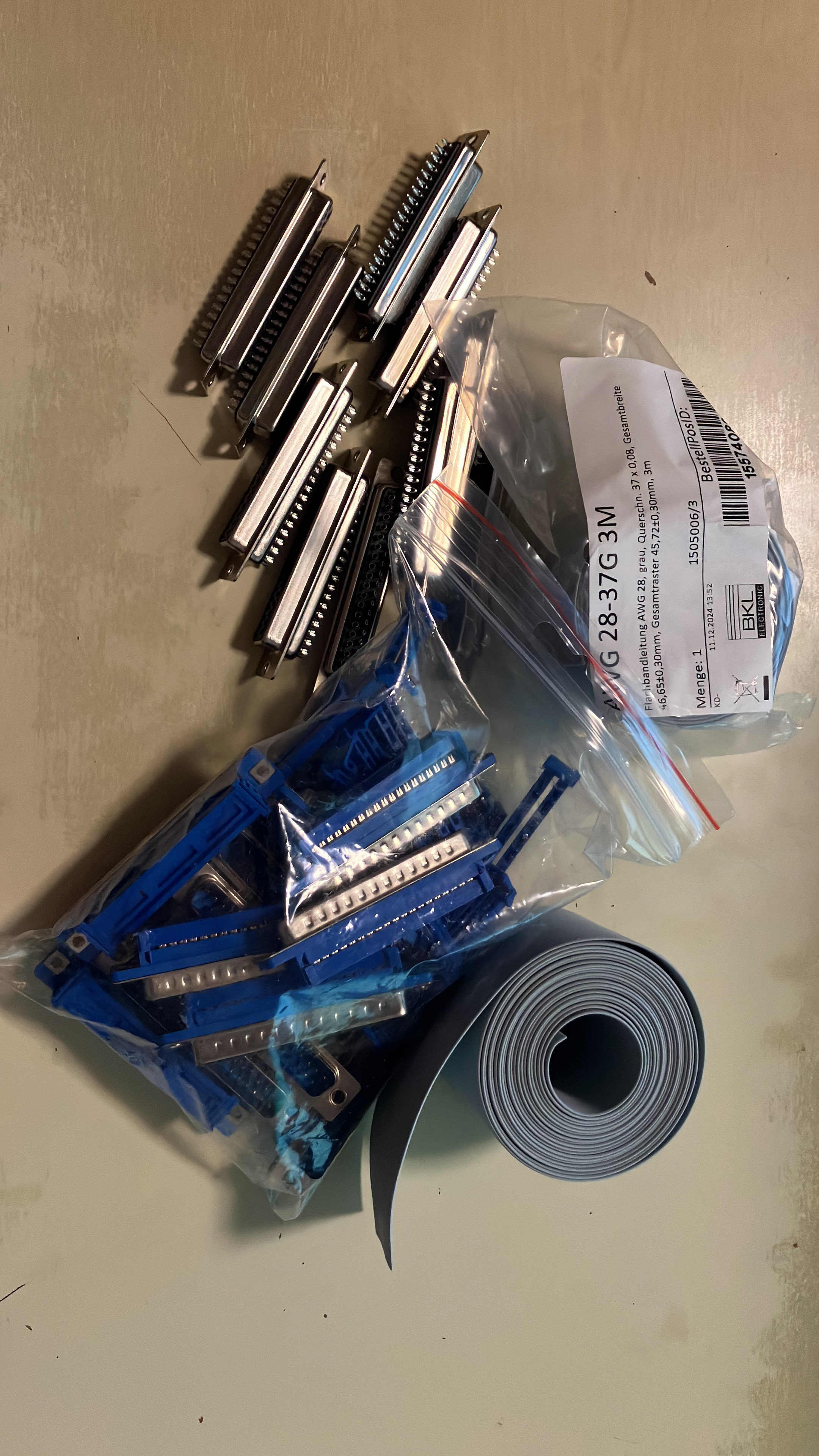-
System calculates collatz sequence
04/17/2025 at 12:29 • 0 commentsThe following video shows the calculation of collatz sequence steps by the relay system:
-
Finished new wiring...
04/16/2025 at 19:18 • 0 comments -
Mounted a connector onto the memory module
03/14/2025 at 22:46 • 0 comments -
Overview picture
03/02/2025 at 14:27 • 0 comments -
Finished the next module connector
03/02/2025 at 13:38 • 0 comments -
Finished a new video
02/20/2025 at 14:53 • 0 commentsA new video is online, in this video I describe how logic using relays works and how the registers are designed...
-
Finished plug for first module
02/09/2025 at 07:33 • 0 comments -
Now phase 2 begins
01/18/2025 at 12:00 • 0 comments -
System test finished!
12/31/2024 at 10:19 • 0 commentsA major success has been achieved...the system test, which thoroughly tests all components of the system, was successfully completed. The following video shows the execution of the test. Phase 1 is now complete, and in Phase 2, the system will be extended with input and output registers.
-
Started with system test program...
11/25/2024 at 19:13 • 0 commentsTo be sure that the system is working fine, development of a system test software ist started...the software will test:
a) all CPU-commands
b) the ALU
c) the adress range
The first step is a dynamic generation of a jump table with the subroutines for the three tests and a collection of the results.
Homebrew 16 bit relay computer
Goal of the project is to develop and build a homebrew 16 bit relay computer
 Peter
Peter